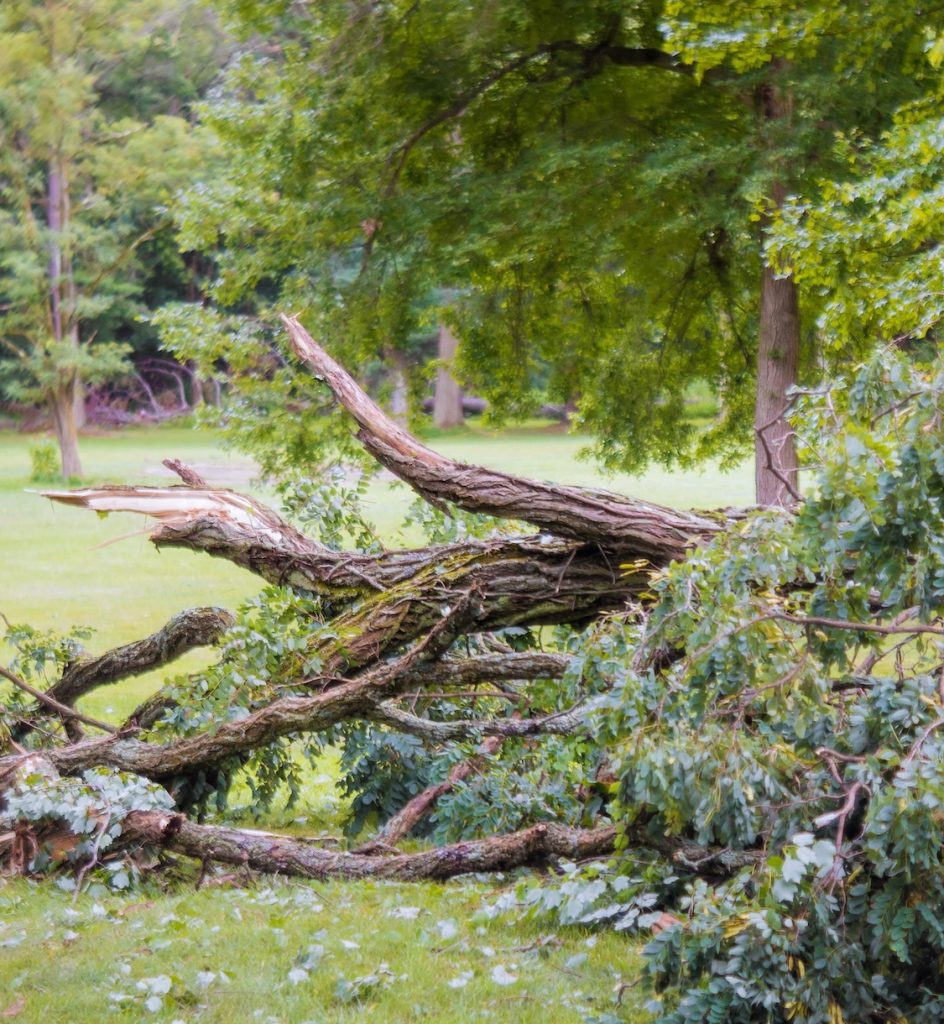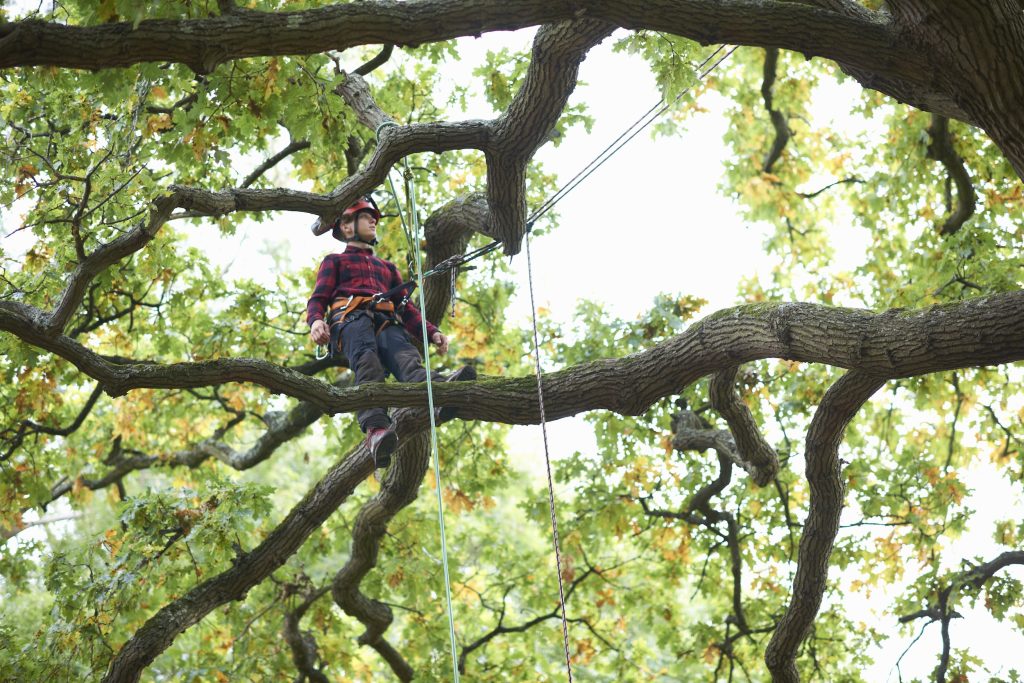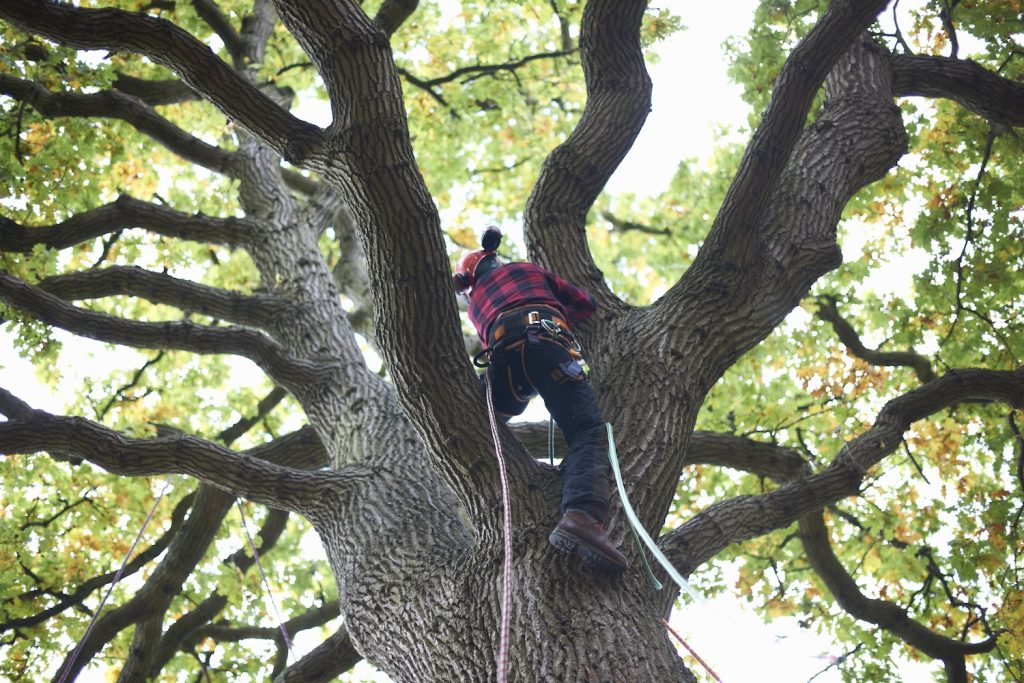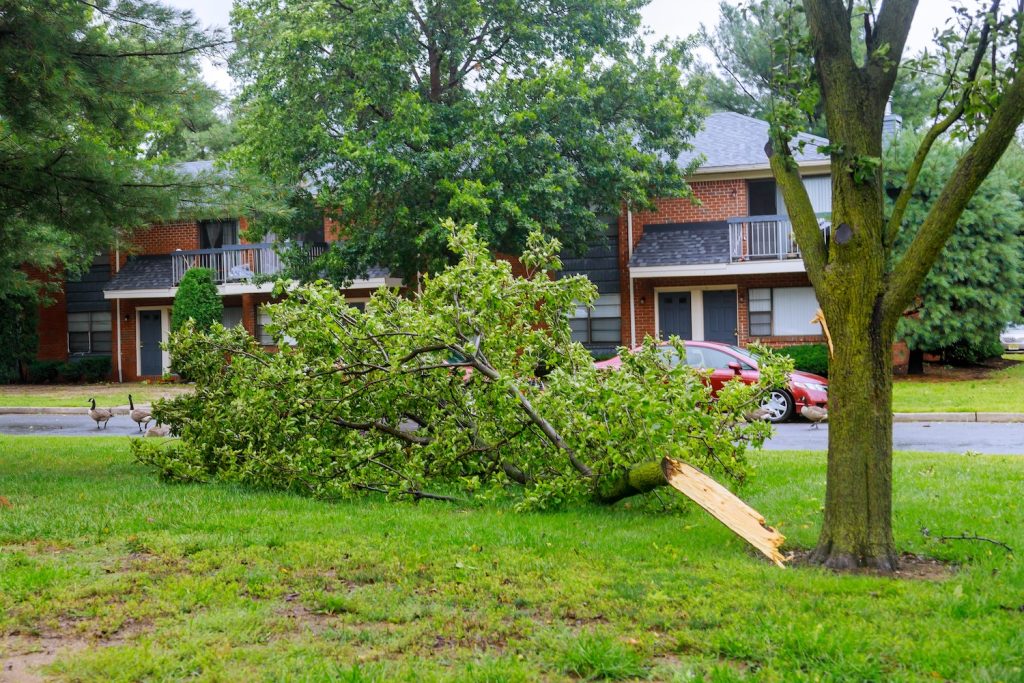In Annapolis, MD, storms are a frequent occurrence that can bring severe weather, including heavy rain, snow, high winds, and the occasional hurricane. One of the most crucial yet often overlooked aspects of storm preparation is the care and maintenance of your trees. Trees that aren’t properly prepared can become dangerous during storms, leading to property damage and personal injury. This blog will guide you through the steps to prepare your trees for storm season and highlight the importance of professional tree inspections.

Why Tree Preparation Is Crucial
When storms hit, trees can be both an asset and a liability. Healthy, well-maintained trees can act as natural windbreaks, reducing the impact of high winds on your property. However, trees that are neglected or improperly maintained can become hazardous, with branches breaking or entire trees uprooting, causing significant damage to homes, vehicles, and power lines.
The key to mitigating these risks lies in proper tree care and maintenance. Regular pruning, soil care, and inspections can significantly enhance the resilience of your trees, making them less likely to suffer damage during a storm.
Understanding Tree Vulnerabilities
Different species of trees respond differently to storm conditions, but all trees have potential vulnerabilities:
Weak or Dead Branches: These are the first to break during a storm, often causing damage to property below.
Shallow or Compromised Roots: Trees with weak root systems are more susceptible to being uprooted in high winds.
Diseases and Pests: Infestations can weaken the structural integrity of a tree, making it more likely to fall or lose limbs.
Steps to Prepare Trees for Storm Season

- Pruning and Trimming
- Regular pruning is essential to remove dead or weak branches that could become projectiles in high winds.
- Thinning the canopy reduces wind resistance and lowers the chance of your tree being uprooted.
- Soil Care
- Healthy soil promotes strong roots, which are essential for a tree’s stability during a storm. Aerate compacted soil and ensure it drains well to avoid waterlogged conditions that can weaken roots.
- Applying mulch around the base of your trees helps retain moisture and protect roots.
- Supporting Young Trees
- Young or newly planted trees should be staked to protect them from strong winds. Make sure the stakes are not too tight to allow for some natural movement, which encourages stronger trunk development.
The Role of Professional Tree Inspections
A professional tree inspection is one of the best investments you can make for storm preparation. Arborists can identify potential risks that may not be visible to the untrained eye, such as internal decay, pest infestations, or structural weaknesses. They can also provide specific recommendations for care and maintenance to strengthen your trees before a storm hits.
What to Expect from a Professional Inspection:

- Health Assessment: The arborist will evaluate the overall health of your trees, including signs of disease or pest infestations.
- Structural Review: The structure of the tree, including the root system, trunk, and canopy, will be examined for vulnerabilities.
- Maintenance Recommendations: Based on the inspection, the arborist will suggest pruning, soil treatments, or even tree removal if necessary to ensure safety.
Regular inspections, particularly before storm season, are crucial for preventing damage and ensuring the long-term health of your trees.
Special Considerations for Hurricane Season
While all storms require preparation, hurricane season in Annapolis demands extra attention due to the extreme weather conditions associated with hurricanes.

- Advanced Hurricane Preparation
- Schedule an inspection well before hurricane season starts to address any potential issues.
- Emergency pruning may be necessary to remove large limbs or branches that could become hazardous during a hurricane.
- Bracing and Cabling: For particularly large or old trees, consider using bracing and cabling to provide additional support against the powerful winds of a hurricane.
- Post-Hurricane Assessment: After a hurricane, have your trees inspected again to assess any damage and take necessary corrective actions.
Preparing your trees for storm season is essential to protect your property and ensure the safety of your home and family. Regular maintenance, coupled with professional inspections, can make all the difference in how well your trees withstand storms, particularly during the challenging hurricane season.
Ensure your trees are storm-ready by scheduling a professional inspection with Pleasant Trees. Contact us at 443-480-4304 or use our contact form to book your appointment today!
Disclaimer:
It’s important to remember that while professional inspections and maintenance can identify many risks and help mitigate potential hazards, there is no way to ensure or guarantee that a tree is completely “safe.” Severe weather can have unpredictable effects, and even well-maintained trees may suffer damage. Always prioritize safety and consider professional advice when preparing for storms.
